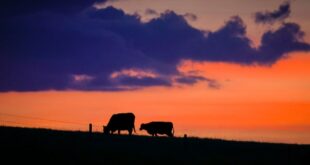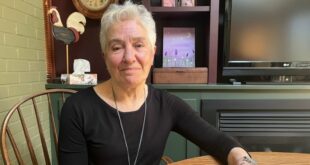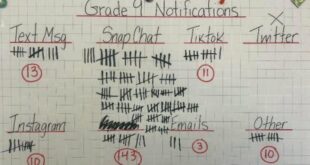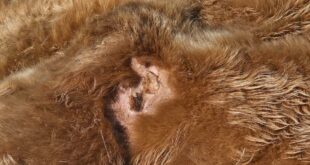Crews and whale to rest a few days before resuming efforts to get the orca into the open ocean.
.jpg?crop=1.777xh:h;*,*&downsize=510px:*510w)
The race to save a baby orca trapped in a lagoon off Vancouver Island
Two local First Nations with marine mammal scientists and Fisheries and Oceans Canada officials race against time to save an orca calf trapped in a lagoon off the coast of Vancouver Island. The calf followed its mother into the area, but she later died, and so far people haven’t been able to coax the calf back out into the open ocean to join the rest of its pod.
The team working to save a baby orca trapped in a lagoon on northern Vancouver Island nearly succeeded in getting the whale out on Thursday.
Around 10 boats from Fisheries and Oceans Canada (DFO), First Nations and community members were out on the water the afternoon of March 28, attempting to coax the young whale out into the open ocean with the hope it reunites with its pod.
The whale has been named kʷiisaḥiʔis (kwee-sa-hay-is) by the Ehattesaht First Nation, which translated is “Brave Little Hunter.” It has been trapped in the remote lagoon since last weekend after its mother became beached on a sandbar while trying to exit the lagoon and later died, despite rescue efforts.
To get out of the lagoon near Zeballos, B.C., the whale must pass over that same sandbar.
“The on-water operation involved using oikomi pipes from a line of vessels as a sound wall to move the animal through the narrow exit point,” reads a statement from DFO media representative Leri Davies.
Pipes used to herd marine mammals
Oikomi pipes — sometimes called banging pipes — are used to herd marine mammals. They are made out of reverberant metal, and while partially submerged in water they can be struck with a hammer, creating a loud noise underwater.
“The team worked in perfect unison to move the whale calf, kʷiisaḥiʔis, to the shallow area near the outflow. Unfortunately, the juvenile whale would not make the final trek over the sandbar.”
.png?crop=1.777xh:h;*,*&downsize=510px:*510w)
Killer whale calf stranded after mother dies
The race to save an orca calf is underway off Northern Vancouver Island. The calf’s mother became beached Saturday and drowned, despite an effort to save her. Stephanie Mercier reports.
That said, DFO’s statement said it showed the potential effectiveness of the technique and the ability of the highly diverse team to “work in tandem for a seamless execution.”
In a separate statement, Ehattesaht chief and council said everyone had a role that day whether it be out on the water, singing songs or preparing food.
The nation noted that one difficulty is the whale doesn’t know the group is trying to help her.
‘Pretty let down’
“Really the plan did work but in the end little kʷiisaḥiʔis was not ready,” it reads.
“We did get her closer [to the exit], but right close that flight-or-fight instinct took over and she swam back underneath us and went all the way to the back end of the lagoon. Everyone was pretty let down,” it continues.
The young orca is a Bigg killer whale — also known as a transient — and is threatened under the Species at Risk Act.
“This … is a very small population. So every animal that we can save will help, hopefully, recover the population. And every animal that’s lost is again affecting the population going forward,” said Paul Cottrell, DFO marine mammal co-ordinator.
Time for rest
The week-long efforts to entice the two-year-old orca calf out of the lagoon have also included the use of recorded killer whale calls, specialized directional guide lines and the sound of Indigenous drums.
The tides this weekend won’t be high enough for the whale to safely swim across the sandbar blocking it in, so everyone involved — including the baby orca — are taking a few days to rest.
“The tides are bad for a few days and yesterday was stressful for her, you can tell,” reads the Ehattesaht Nation’s statement.
The whale has not been seen hunting or eating, and DFO has said a necropsy of her mother indicates kʷiisaḥiʔis was still breastfeeding.
However, the DFO says orcas also start eating solid foods when they are a few months old.
Bird in mouth
On Thursday, rescue team members observed the whale with a bird in her mouth.
“Birds are usually more like toys than food for young Bigg’s killer whales but nevertheless, this is a good sign,” said Jared Towers, a DFO researcher and executive director of Bay Cetology, in a statement on social media.
The whale is big for its age, has a strong, loud voice and is demonstrating resilience, Towers added. He also said that after the loss of her mother, it feels as though those working to support her are “beginning to mourn and heal with this youngster.”

“Every day chief and council, elders, responders and community members have met to provide input on this situation … and we’ve talked a lot about loss and what healing looks like,” he said.
After a few days of rest, the team will reconvene and discuss next steps, which could eventually include the more risky capture-and-release scenario.
Writing stories
Many of those involved with the rescue have commented on the emotional toll. In its statement, the Ehattesaht First Nation said that discussions about the whale feel heavy, and it’s causing members to reflect on their relationships with whales. Yet, they said they consider this experience with kʷiisaḥiʔis a gift.
“When things like this happen they start to come to life and become stories and now we are actually living it and even writing the Ehattesaht stories. There is a certain amount of dignity in this process and we have to think about that,” the statement reads.
In light of that, the nation held a feast on Thursday evening, during which they formally named kʷiisaḥiʔis. The nation’s children attended the event, which they said is important to help kids not only remember the name but carry the whale’s story forward.
“We also took time to stand up and blanket everyone who has come here to help our family member kʷiisaḥiʔis and thank them for coming with such open hearts.”
The nation says the feast also allowed them to set aside some grief for the whale’s now departed mother.
ABOUT THE AUTHOR
Tessa Vikander is a CBC News reporter covering local and national news. Previously she reported for Toronto Star, Reuters, IndigiNews and CTV News. You can contact her at tessa.vikander@cbc.ca.
*****
Credit belongs to : www.cbc.ca
 Atin Ito First Filipino Community Newspaper in Ontario
Atin Ito First Filipino Community Newspaper in Ontario






